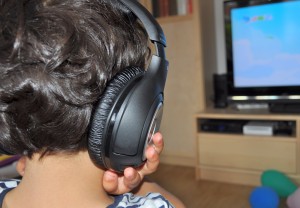According to the most recent health survey, around 1 in 7 adults in Wales (or 15%) reported having difficulties with their hearing (Welsh Government, 2013, p. 11). This health concern increased with age, affecting around one third of senior citizens aged 65 and over and affecting men more than women. A 2010 study estimated that British Sign Language (BSL) is the first or preferred language of approximately 3,000 people in Wales (Siôn, 2010). By 2031, the projection for the total number of people in Wales with hearing loss will be in excess of 725,000 (Wales Mental Health in Primary Care, n.d.).
Academic research found that visual media (especially television) could alleviate the frustration and social exclusion in physical, mental and social domains for the deaf/hard of hearing community (Austin, 1980; Austin & Myers, 1984). We believe that digital television is intrinsically a form of assistive technology and could enable the deaf/hard of hearing community to have more access to information and services.
Wales is the UK’s first digital television nation since the Digital Switchover was completed in March 2010 (DigitalUK, 2012) and this technological revolution brought in new forms of data dissemination that transformed not only the ways people acquire information from television but also the way people interact with television services. Audiences have not only more programme choices but also new means of access via various platforms (such as Freeview, cable, satellite and the internet). However, current regulating measures place emphasis more on quantity (e.g. the percentage of television programme subtitling) but less on quality. Over emphasising the quantity of subtitling could lead to overlooking other quality-related constraints (such as poor quality of sound in television programmes) faced by deaf/hard of hearing audience.
For this research, we aim to:
- identify the patterns of digital television adoption and usage within the deaf/hard of hearing audience in Wales;
- evaluate the enabling and disabling effects of Digital Television on the deaf/hard of hearing community in Wales;
- provide a comprehensive report of suggestions by deaf and hard of hearing viewers’ on improving digital television service.
This project began as a pilot study, funded by Bridging the Gaps Open Programme.
A recent award by the Action on Hearing Loss Cymru, BBC Wales, Bridging the Gaps, Coleg Cymraeg Cenedlaethol, Research Institute of Arts and Humanities, Swansea University, and S4C allow the research to move into an empirical phase.
Digital Television and Hard of Hearing Audiences in Wales (PDF)


